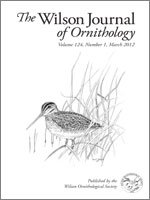We studied breeding season communities of grassland birds on short-grass and mixed-grass prairie sites during the second and third breeding seasons following two large wildfires in March 2006 in the Texas panhandle, USA. There was an apparent temporary shift in avian community composition following the fires due to species-specific shifts associated with life-history traits and vegetation preferences. Species that prefer sparse vegetation and bare ground on short-grass sites, such as Horned Lark (Eremophila alpestris), benefited from wildfires, while others, such as Western Meadowlark (Sturnella neglecta), that prefer more dense vegetation, were negatively impacted. Mixed-grass sites had species-specific shifts in 2007, two breeding seasons after the fires; grassland bird communities on burned plots were similar by 2008 to those on unburned plots. Avian communities appeared to return to pre-burn levels within 3 years following wildfires. Many of the responses in our study of wildfire were similar to those reported following prescribed fires elsewhere. Prescribed fires appear to have similar effects on the avian community despite differences in intensity and environmental conditions during wildfires.
How to translate text using browser tools
1 March 2012
Grassland Bird Communtiy Response To Large Wildfires
Anthony J. Roberts,
Clint W. Boal,
David B. Wester,
Sandra Rideout-Hanzak,
Heather A. Whitlaw
ACCESS THE FULL ARTICLE





